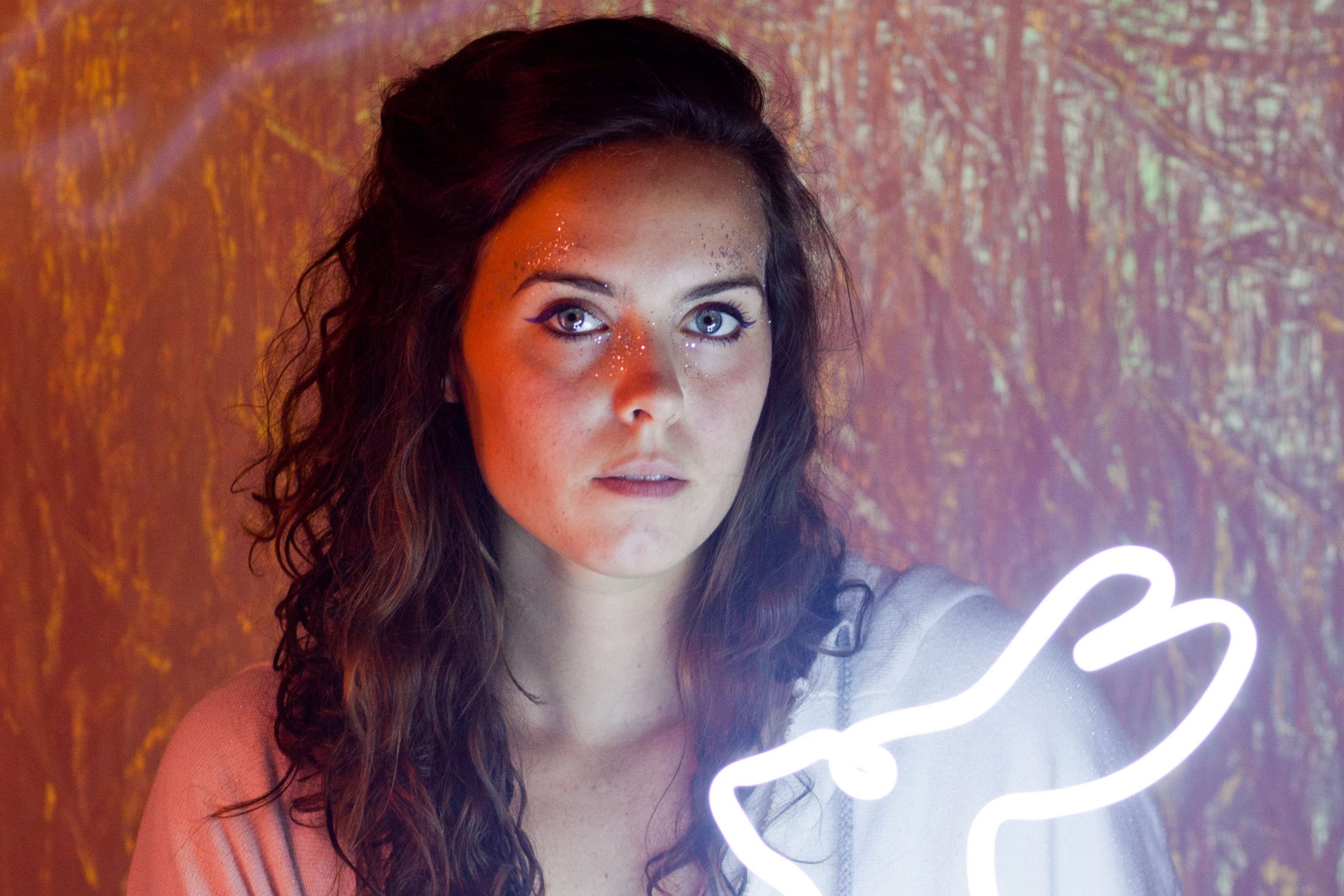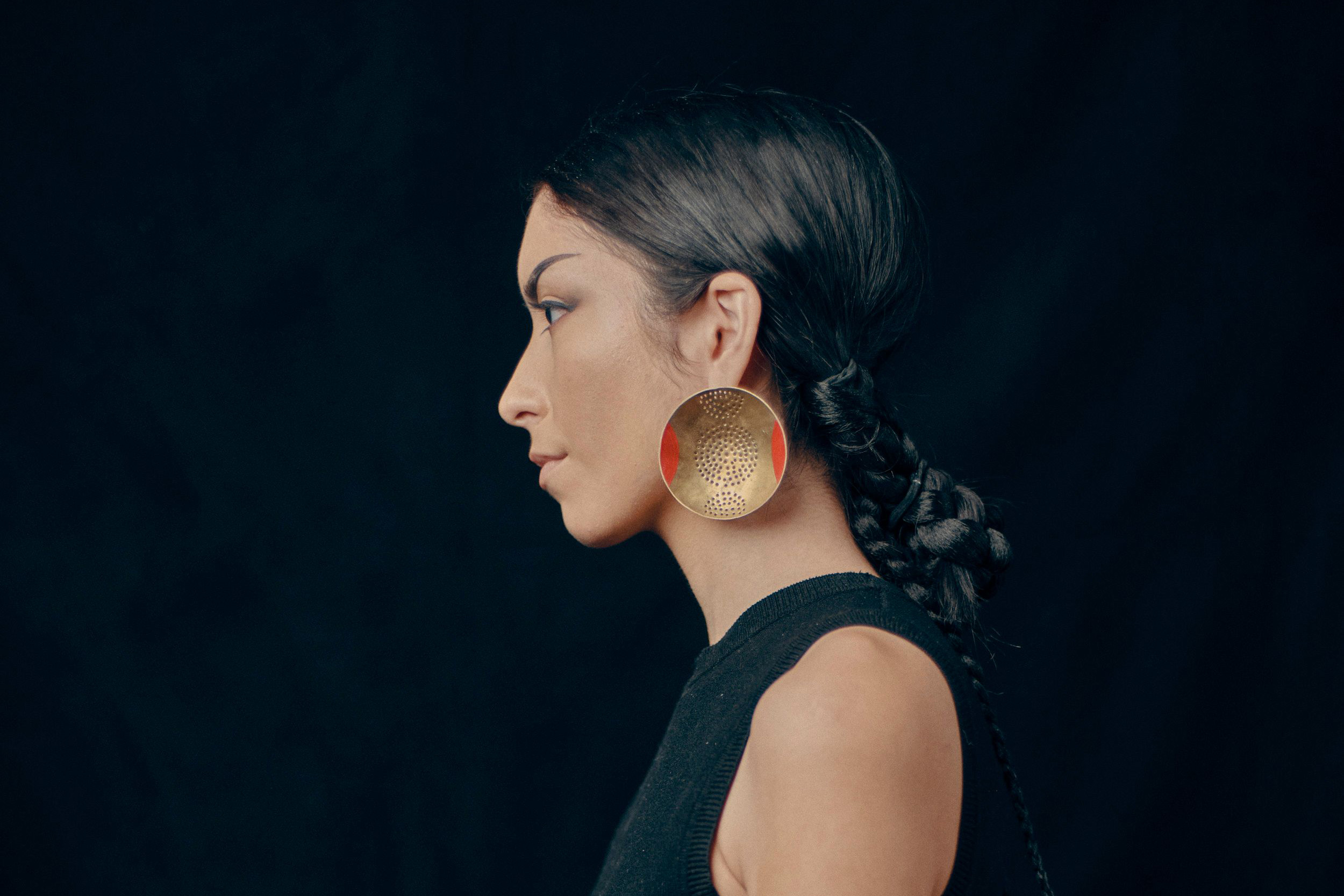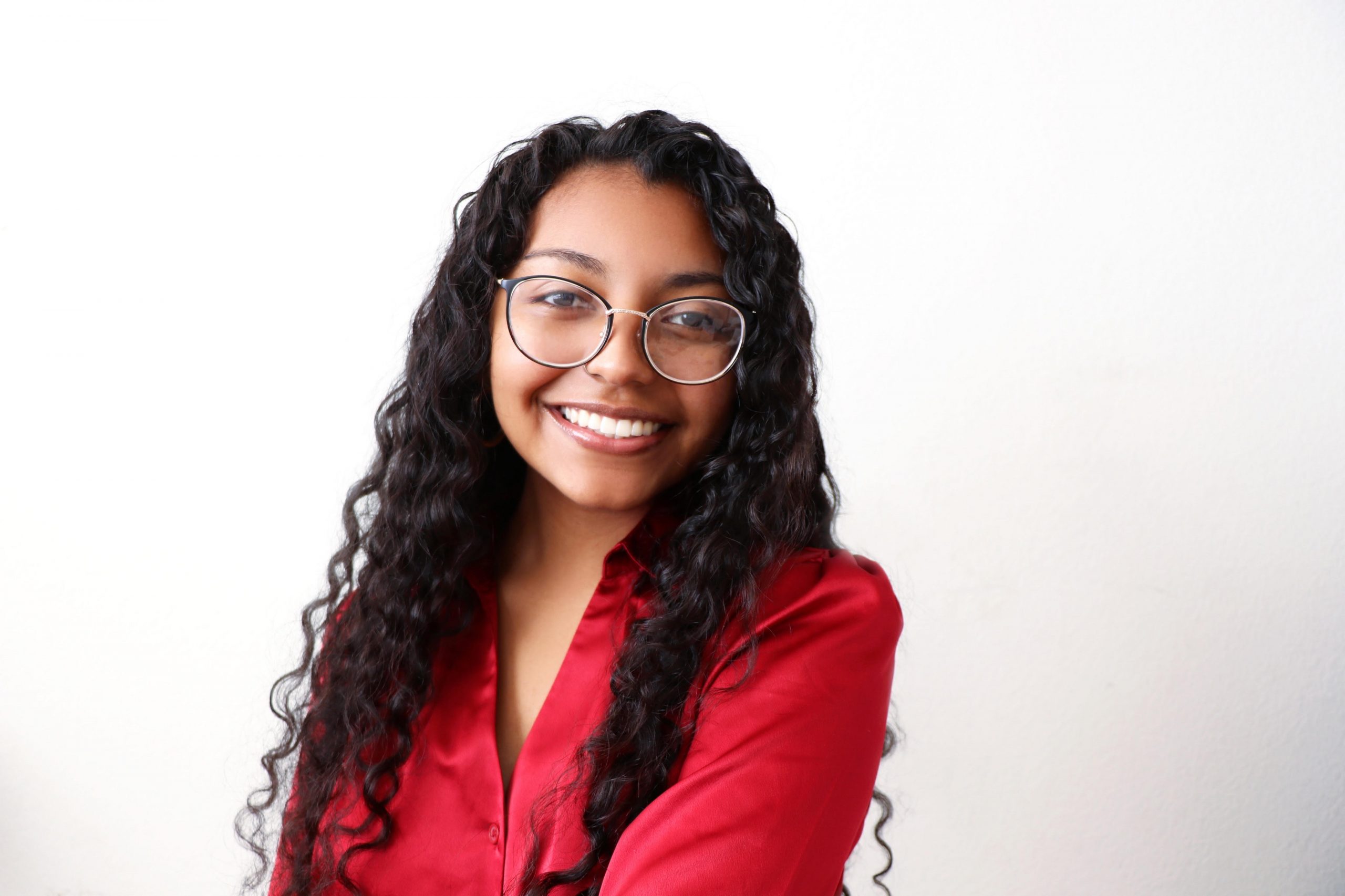Three Young Phoenix Artists on Power in Vulnerability: The Meet Cute. Unruly. Room to Breathe.

Sam Frésquez, Mia B Adams and Lily Reeves are three of the 11 Arizona artists featured in Scottsdale Museum of Contemporary Art’s exhibit “Forever Becoming: Young Phoenix Artists.” The exhibit showcases “resilience and determination of a new generation of artists who expose the complexities of becoming within the rapidly evolving ethos of today,” according to the museum.
The exhibit, which runs through January 23, as a whole represents a diverse display of mediums and topics, with each artist showcasing undeniably unique talent through their respective ability to illuminate truth. Each sensory experience is personal, shared, powerful and paralyzing. All display a degree of vulnerability, and as the curtains drop there, arms arise: There is tremendous power here.
The Meet Cute
For Sam Frésquez, their experience as a queer person intersects with their identity as a someone whose ancestors did not choose to come to the United States. Rather, the country’s border enveloped the area housing Frésquez’s family in the 1800s. Frésquez uses art as a way for them to explore themselves while discovering where they can push to collective experience.
“I definitely feel like when you explore yourself and when you are able to get out of more intimate spaces within yourself that you’re inherently talking about phenomenons and things that happen with other people that aren’t always talked about,” they say.
For their piece The Meet Cute, Frésquez superimposes their face into scenes from ‘80s films and rom coms with traditionally heteronormaitve tropes. Frésquez is seen in “Pretty in Pink,” “La La Land,” “500 Days of Summer,” and many others. By putting a queer person into these well-known stills, Frésquez says, they question the stereotypical presentation of queer love on film.
The concept came to them while they were rewatching romcoms and watching queer films in lockdown with their brother. Frésquez explains how in the romcoms, the heteronormative couples had their “airport,” “Empire State Building” or “elevator” scene — we all know the one. It’s sappy, it’s romantic and it’s cringely adorable. But in queer cinema, most couple were not afforded the same lightness.
“I just kept being surprised at the tropes that were so inherent in every single [queer film],” they say. “I was really expecting them to be about love, because it’s about two people, and it’s about relationships but a lot of the times queer film isn’t even about those two people. It’s about sort of a the hardships of being queer — and not to say that those aren’t real big things, but it just felt like this genre wasn’t allowed to actually be about two people in love.”
Frésquez explained how there is inherent political subtext to our assumptions about whitness and cis-hetero relationships being the default. Growing up this narrative was reaffirmed to them by other people, they say.
It wasn’t until this piece’s imminent public showing in SMoCA, and a serious relationship, that Frésquez knew it was time to come out to their family.
“I knew that this piece would be showing at SMoCA and so it kind of made a deadline for myself where I was like, I absolutely have to tell my family by this date because this will just be out in the public sphere,” they said. “I have to tell them by then.”
As they spoke about this, Frésquez took a breath, and paused before speaking.
“I think we have this attitude of like, ‘Oh, it’s 2021 like things are so, we’re so far,” they explain. “But, I was terrified to tell my family…But I don’t know, the nice thing about making work is you get to start conversations.”
For Frésquez, this piece was about more than artistic chance — instead it illustrates personal vulnerability in a pure and authentic way. The Meet Cute has a name fit for the light and expected elements of this particular artistic expectation, but in these familiar moments lies a subtext of importance and radicalness.
“I do feel very vulnerable in it, but I feel obviously, there’s power in vulnerability,” they say.

Unruly
For Mia B. Adams, Unruly is her protest.
Growing up in a predominantly white area meant Adams’ hair straightener held power over her identity.
“I very much felt like an outlier,” she says. “And I struggled with self confidence and really struggled with my identity as a Black and Mexican woman. I really started suppressing my Blackness with this tool because I felt like I wanted to fit in. I felt like I wanted to fit into these white beauty standards that are very prominent within our culture.”
The heat styling tool was an everyday object used in an attempt to control her hair and mold it into the standard around her. For women of color, this experience is not uncommon. The Curly Hair Movement was started by Black women in the ’60s and has now been expanded by women of color across the country, encouraging women to appreciate and care for their natural hair in a way society has not encouraged before.
As Adams grew up, she began to understand her beauty, power and self love — and the straighter went into the cabinet, where it stayed until eventually it was relocated to its current residence: SMoCA.
Adams’ piece Unruly is made up of hundreds of discarded or donated heat styling tools — including the very one she used to suppress and attempt to control her identity.
“With Unruly I wanted to use straighteners in a pile because it represents how this tool no longer serves any power or purpose in my life,” Adams says. “One of them is my very own straightener. It was one that I used growing up in middle school or high school and once I got to that point where I began, you know, loving myself and I felt like I didn’t need this tool anymore. It sat in my bathroom cabinets for years and years on end and wasn’t touched.”
Adams’ straighter, now part of the larger installation, lies on the floor of SMoCA, in a tangled pile of black wires and pink, red and blue flat irons. The cords twist and curl around each other, intertwining into a voluminous shape — almost like Adams’ own hair. The piece is loud, Adams says, and the loudness speaks to the power women of color gain when beginning to love their inherent beauty and ultimately themselves.
“I’m very protective over my hair now, just because I feel like it’s an extension of myself,” Adams says. “It’s an extension of who I am and the things that I’ve gone through. I used to straighten it, and it literally physically damages your hair. And I feel like that also symbolizes the damage that was within myself. And by going without heat styling, it really allows me to fully embrace me as I am. I love my hair now.”
Unruly is a protest to Adams’ former oppressor, showcasing the very tool that held so much power over her in a position of discardment. Adams recalls placing her straighter into the pile, and the first word that came to her mind was: overcome. For those who have contributed their own heat styling tools to the piece, Adams understands they are helping to tell both her story and a shared experience.
“With Unruly, it’s kind of like this word describing something or someone that can’t be controlled,” Adams explains. “And in this sense, it’s like you can’t control my hair and no one can. I’m not going to let society control my hair.”

Room to Breathe
In 2020, breathing became political, Lily Reeves explained to me.
“During COVID and during Black Lives Matter, everything that had happened, breathing had become politicized and people have become really fearful, and it had become this like point of contention,” Reeves says. “We were all scared. We were afraid to breathe in public spaces.”
When George Floyd was killed saying, “I can’t breathe” and thousands of people were dying across the globe due to Covid-19, people could not catch their breath — they were too scared to even try.
For Reeves, this was a point of anxiety. She says the empathy she felt after the police killing of George Floyd and the subsequent Black Lives Matter protests, along with the anxiety of potential threatening legislation and the pandemic, were all points of exhaustion for her and those around her — which translated into her art.
“I really wanted to make the space for an individual person, to reintroduce breath as a tool for empowerment, and as a tool for combating these anxieties that are overwhelmingly present in the world that we’re living in,” she says.
Reeves’ SMoCA piece, Room to Breathe, is about experience. When you approach the space, a white reclining daybed unfolds underneath a clear dome speaker hanging from the ceiling. Surrounding the seat are several neon installations, emitting soft rainbow tones, glowing and reflecting off the white walls. Room to Breathe is a literal title.
Reeves has been a sculptor since she was about 15 years old, and when she first discovered neon as an artistic medium, she was “hooked.”
Room to Breathe is inspired by the Wim Hof Method, which Reeves started practicing with her partner and brother in law during lockdown. It’s a breathing exercise focusing on controlled hyperventilation that is intended to promote rhythmic and resilient control over one’s everyday life.
“I have a huge anxiety issue and so a lot of my work stems from finding ways to sort of work on myself, do this sort of inner work that expands your capacity for empathy or for being present in your life for happiness,” she says.
Reeves explained the Wim Hof Method is found in various forms across cultures and religions, all meant to calm and control the body into a state of calm. It can be a form of meditation, prayer or exercise, depending on the person’s approach.
“I just wanted to create a space for that introspection for people to not only address their own mental health, but also address their own inner world so that they could move through the world in a better way,” Reeves says.
“It’s a little hazy and foggy, but it has this really magical and super powerful presence where you feel you can almost physically feel it,” Reeves says. “You move through it as all of the colors but it’s really a saturated way of experiencing life and I love that because there’s all these like super weird metaphysical things about light.”
Reeves spoke to the physical power of light and sound, and how the properties behind the art’s science create a specific sensation for people experiencing the piece.
Having her work presented in the “Forever Becoming” exhibit alongside other young artists proves the point that young artists have a place in these institutions — and there is immense talent among her peers.
“It’s pretty rare — usually these museums like this will show people from California or New York. And it’s like, there’s so much amazing work here,” Reeves points out. “I think SMoCA really stepped it up with this show and showed that they do support younger artists and the art community here. Because the younger artists are the ones that are gonna move it into the future.”

